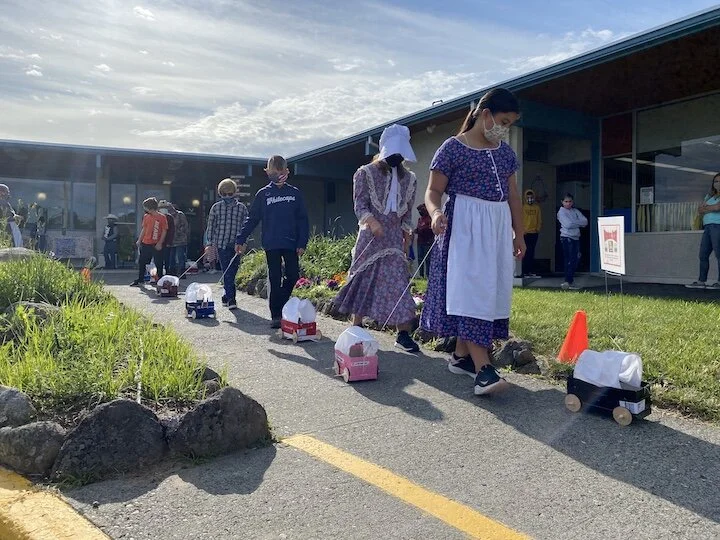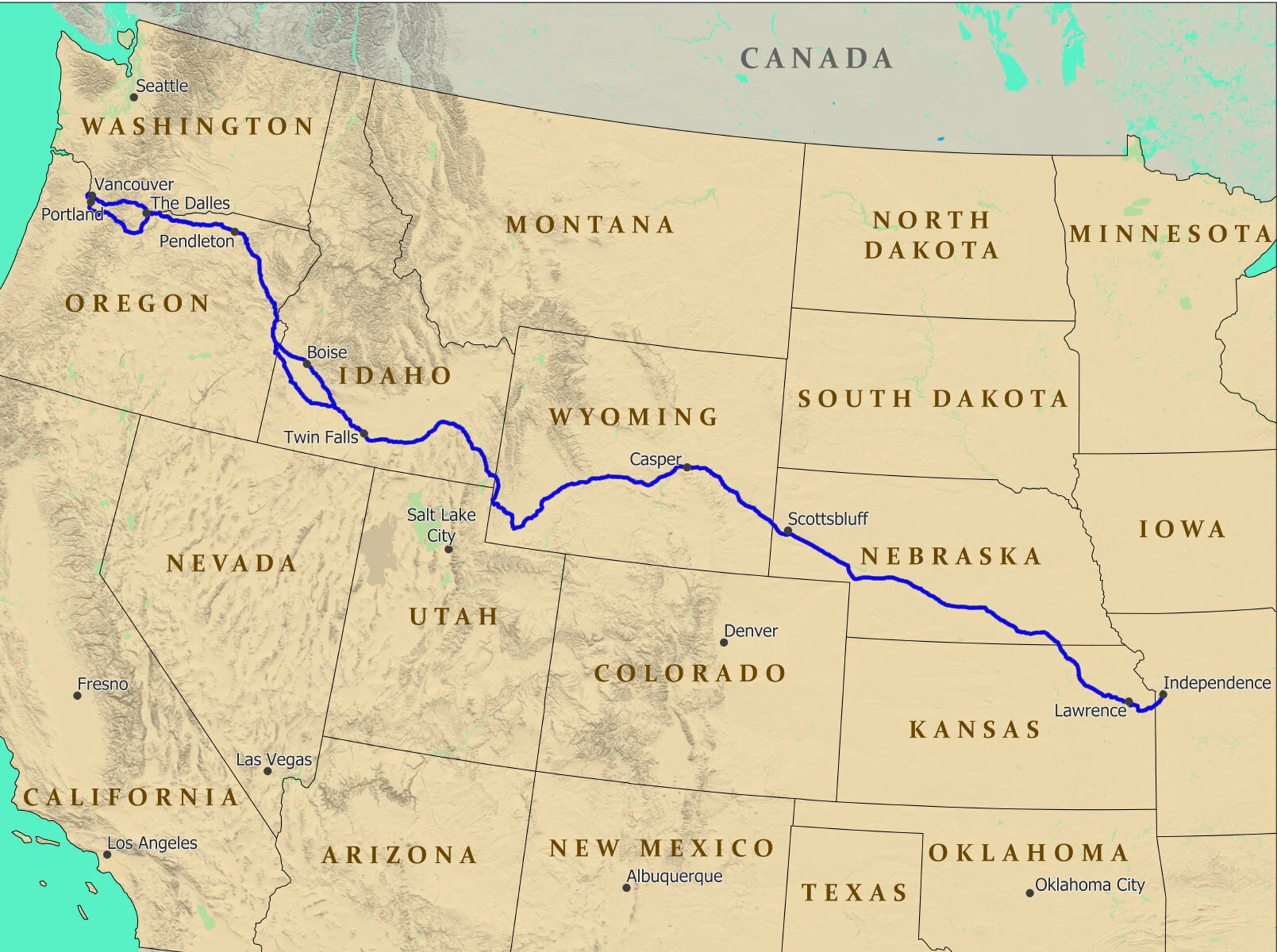'Wagons Ho!' at Dry Hollow
Fourth-graders hit the trail this morning, June 8, at Dry Hollow Elementary as the classes re-enacted the historical journey from Independence, Missouri to Oregon City.
Teachers Autumn Loyd and Melissa Heying unleashed students dressed in pioneer garb for the trail. The students were broken into several groups of five, and they built model wagons, supplied them and created dolls for passengers.
Map of the Oregon Trail - National Park Service
It must have felt like winter was coming early for the two educators as they were able to put together the program together between getting students back in school and the school year ending.
Luckily they had some wheelwrights in their corner to get things rolling.
Tom and Lindsey Giamei of the Workshop on Second Street manufactured hundreds for the project.
The Oregon Trail was laid by fur traders and trappers from about 1811 to 1840, and was only passable on foot or by horseback. By 1836, when the first migrant wagon train was organized.
Planning a five- to six-month trip across rugged terrain was no easy task and could take up to a year. Emigrants had to sell their homes, businesses and any possessions they couldn’t take with them. They also purchased hundreds of pounds of supplies including flour, sugar, bacon, coffee, salt, rifles and ammunition, according to history.com
By far, the most important item for a successful life on the trail was the covered wagon. It had to be sturdy enough to withstand the elements yet small and light enough for a team of oxen or mules to pull day after day.
Most wagons were about six feet wide and twelve feet long. They were usually made of seasoned hardwood and covered with a large, oiled canvas stretched over wood frames. In addition to food supplies, the wagons were laden with water barrels, tar buckets and extra wheels and axles.


